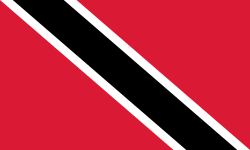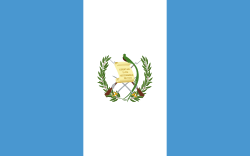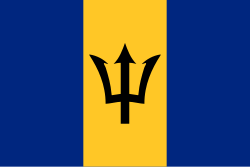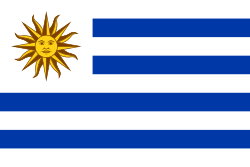Herrarnas tempolopp i bancykling vid olympiska sommarspelen 1984
| Cykling vid olympiska sommarspelen 1984 | ||||
|---|---|---|---|---|
| Landsvägscykling | ||||
| Linjelopp | Herrar | Damer | ||
| Tempolopp lag | Herrar | |||
| Bancykling | ||||
| Individuell förföljelse | Herrar | |||
| Lagförföljelse | Herrar | |||
| Sprint | Herrar | |||
| Tempolopp | Herrar | |||
| Poänglopp | Herrar | |||
Herrarnas tempolopp i bancykling vid olympiska sommarspelen 1984 ägde rum söndagen den 30 juli 1984 i Los Angeles.
Medaljörer
| Event | Guld | Silver | Brons |
| Herrarnas tempolopp | Västtyskland | Kanada | Frankrike |
Resultat
| Placering | Cyklist | Tid |
|---|---|---|
| 1:06,10 | ||
| 1:06,44 | ||
| 1:06,65 | ||
| 4 | 1:06,69 | |
| 5 | 1:06,96 | |
| 6 | 1:07,24 | |
| 7 | 1:07,29 | |
| 8 | 1:07,39 | |
| 9 | 1:07,70 | |
| 10 | 1:07,88 | |
| 11 | 1:07,94 | |
| 12 | 1:08,37 | |
| 13 | 1:08,87 | |
| 14 | 1:08,96 | |
| 15 | 1:09,04 | |
| 16 | 1:09,36 | |
| 17 | 1:09,42 | |
| 18 | 1:09,54 | |
| 19 | 1:10,56 | |
| 20 | 1:11,03 | |
| 21 | 1:11,10 | |
| 22 | 1:11,12 | |
| 23 | 1:11,61 | |
| 24 | 1:16,91 | |
| NP | ||
| DNF | ||
| NP |
Referenser
Externa länkar
| ||||||||
Media som används på denna webbplats
Olympic Rings without "rims" (gaps between the rings), As used, eg. in the logos of the 2008 and 2016 Olympics. The colour scheme applied here was specified in 2023 guidelines.
Olympic Rings without "rims" (gaps between the rings), As used, eg. in the logos of the 2008 and 2016 Olympics. The colour scheme applied here was specified in 2023 guidelines.
Kanadas flagga, införd 1965; denna version med Pantone‐nyanser. Nuvarande utformning ersatte den tidigare kanadensiska Red Ensign.
Trinidad och Tobagos flagga
Flag of Jamaica. “The sunshine, the land is green, and the people are strong and bold” is the symbolism of the colours of the flag. GOLD represents the natural wealth and beauty of sunlight; GREEN represents hope and agricultural resources; BLACK represents the strength and creativity of the people. The original symbolism, however, was "Hardships there are, but the land is green, and the sun shineth", where BLACK represented the hardships being faced.
The flag of Brazil from 1968 to 1992 with 23 stars.
Variant version of a flag of Japan, used between January 27, 1870 and August 13, 1999 (aspect ratio 7:10).
Variant version of a flag of Japan, used between January 27, 1870 and August 13, 1999 (aspect ratio 7:10).
Det är enkelt att lägga till en ram runt den här bilden
Chinese Taipei Olympic Flag. According to the official website of Chinese Taipei Olympic Committee, Blue Sky(circle) & White Sun(triangles) above the Olympic rings is neither the National Emblem of the Republic of China, nor the Party Emblem of Kuomintang (KMT), but a design in between, where the triangles do not extend to the edge of the blue circle, as registered at International Olympic Committee in 1981 and digitally rendered in 2013. Besides, the blue outline of the five-petaled plum blossom is broader than the red one. Moreover, the CMYK code of the blue one and the Blue Sky & White Sun is "C100-M100-Y0-K0", and different from the Olympic rings (C100-M25-Y0-K0). Note that it's the only version recognized by IOC.
The flag of Brazil from 1968 to 1992 with 23 stars.
Pictograms of Olympic sports - Cycling (road). This is unofficial sample picture. Images of official Olympic pictograms for 1948 Summer Olympics and all Summer Olympics since 1964 can be found in corresponding Official Reports.
Pictograms of Olympic sports - Cycling (track). This is unofficial sample picture. Images of official Olympic pictograms for 1948 Summer Olympics and all Summer Olympics since 1964 can be found in corresponding Official Reports.
This is the flag of the Cayman Islands, prior to 1999 (It seems this version is still in use). The base pattern is from HK Blue Ensign and the arms are from the blue ensign. The FOTW was used for the position of the arms.
The three stars mean Grand Cayman(76miles), Cayman Brac(14miles), and Little Cayman(10miles).Flag of the Philippines in the previous official shade of Cable No. 70077 or National Flag Blue. In use for 60 years, 8 months and 18 days from March 25, 1936, to February 25, 1985 and from February 25, 1986, to February 12, 1998.
Construction sheet approved by the Philippine Heraldry Committee on January 24, 1955.
The exact colors adopted by the Philippine Heraldry Committee in 1955 was as follows:
The red color bearing Cable No. 70180; the blue color, Cable No. 70077; the yellow color, Cable No. 70068; and the white color, Cable No. 70001.

































